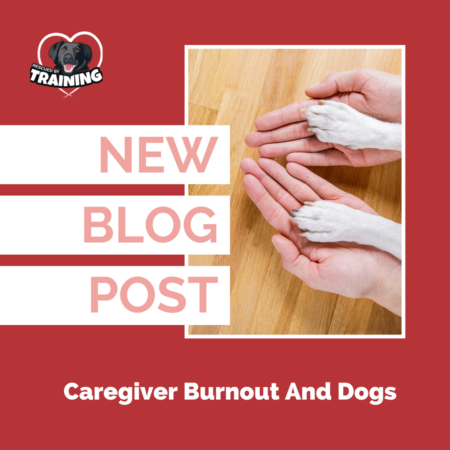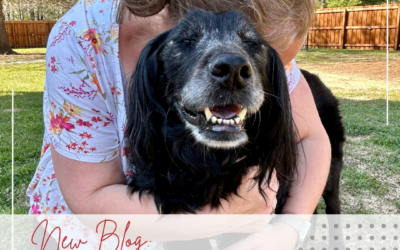When you share your life with a dog struggling with fear, separation anxiety or are caring for a sick or senior dog, it’s easy to get so immersed in caring and protecting for them, that you push your own needs aside. This is a topic that comes up with many of my clients who are on long behavior modification journeys, and one I’ve been feeling personally living with two senior dogs. Much of my life is structured around my dogs’ daily care, finding appropriate exercise and enrichment opportunities and keeping on top of all their medical needs. And for my clients who live with fearful dogs or those suffering from separation anxiety they often feel as if they’re prisoners to their dog, unable to leave home, do social activities, have people over or do anything without first planning for their dog.
Honestly, it can be exhausting.
And it reminds me of one of the most profound life lessons – a message about safety and self-care.
You need to put your own oxygen mask on first, before attempting to help those around you.
Caregiver burnout is real. Cleveland Clinic defines it as “a state of physical, emotional and mental exhaustion. Burnout can occur when caregivers don’t get the help they need, or if they try to do more than they are able, physically or financially. Stressed caregivers may experience fatigue, anxiety and depression.” You can probably see how this might apply to dog caregivers when their dogs are challenging. Many of the causes of burnout can also be applied to us as caregivers for our dogs.
When we look at the risk of caregiver burnout, it increases when we have:
- Unrealistic expectations
- Unreasonable demands
- Lack of control
So how can we mitigate these things? Well, to start, when I’m consulting with clients, I’m alway as transparent as possible when discussing how long behavior modification takes. Setting clear expectations from the beginning, preparing clients for regressions along the way, always moving at the dog’s pace and providing clear, step by step training plans are all ways I help best prepare clients for what their behavior journey may look like.
It’s also important to carve out training breaks – not just for your own mental wellness but for your dog’s learning. In my structured separation anxiety program, training happens 5 days a week and always take two days off. Neither you or your dog should work every day. I also encourage clients to leverage things like dog sitters and daycare to give themselves a reprieve and some time away from their dog. This can be hard, adding a financial burden, but often the emotional break is well worth the cost.
I also try to encourage clients to give themselves small rewards along the training journey, even if it’s something small like a special coffee drink, takeout or some other little treat. You deserve reinforcement for your hard work and commitment in training, just like your dog deserves reinforcement when they’re training.
If you aren’t taking care of yourself, you will lose motivation. You won’t want to train. You’ll let your guard down. And these things could be detrimental to your dog’s safety and success. Your dog needs you in the game for them to succeed. Put your own oxygen mask on first, before attempting to help those around you. Take care of yourself, so you can take care of your dog.
If you are struggling, I’d love to help you. You can schedule a session here.
Happy training! Take care of yourself!
![]()




